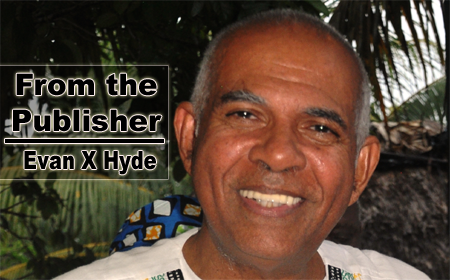This column is late, and it is not direct in its message. It is written to place in some kind of context the brutal hanging of Nora Parham in British Honduras in June of 1963, and her burial in an unmarked grave. This is the British, classic British. You can’t argue with success: the British are successful, and cruelty is the foundation of their success.
Remember, this was half a year before Belize gained self-governing colony status, so Mr. Price’s power was not as substantial as it became in January of 1964. But there is no doubt he could have done more to help Nora Parham.
Anyway, the following is an excerpt from a book entitled A TERRIBLE BEAUTY: POETRY OF 1916. As I said in the first paragraph, the message is not direct. Read between the lines. Por favor.
The trauma of the Great Famine had left Ireland with a fractured society and a culture on the verge of extinction. The drain of migration, the near demise of the Irish language, alongside the erosion of modes of thought and knowledge from past generations were causing a slow death for a national culture.
However, by the end of the nineteenth century improved literacy, more secure land tenure and an increased politicisation of the people had led to a rewakening of a sense of Irishness. The stage was set for a life giving movement inspired by a new generation of Irish people – people of vision and energy, idealists who found a cause in saving and promoting Irish culture. There was a prevailing atmosphere of renewal and youth which brought a revitalised energy to the Irish language, the visual arts, literature, the theatre and the sporting arena. A new enthusiasm for the ancient Gaelic games of football and hurling was generated with the foundation of the Gaelic Athletic Association in 1884; the Gaelic League was founded by Douglas Hyde, Eoin MacNeill and others with the purpose of restoring and promoting Irish language and culture; Irish music was celebrated through the Feis Ceoil, founded in 1897. The glories of early Celtic art was found a new life under the momentum of the Irish Arts and Crafts movement; this was expressed by the works of artists such as Sarah Purser, who established the stained-glass studio of An Tur Gloine, and in the various artistic enterprises of the Yeats sisters.
While WB Yeats and Lady Gregory were committed to founding a national theatre, Dublin was full of theatres run by the young. Padraic Pearse, Thomas MacDonagh and Joseph Mary Plunkett, whose poetic works are included in this book, were all engaged in theatrical pursuits – writing and staging plays, and founding theatres and literary journals. All three were poets and writers and, like many of their associates, they were engaged in every aspect of the cultural revival.
Poetry had a long history of living underground in the Gaelic tradition, and dreams of nationhood and the longing for freedom found expression in a particular way of poetry. Little wonder, then, that the same three poets – Pearse, MacDonagh, and Plunett were among those who walked out on Easter Monday morning 1916 to set their country free. Their poetry expresses the longing for freedom that the authorities, fully taken up with parliamentarians and rebel movements, were blind to.
In the aftermath of the Rising, the executions of the leaders and their callous burial without ceremony in a mass grave generated an outpouring of poetry. Written by almost every poet who took part in the literary revival, these poems, many of which are placed in this collection, gave words to the depth of anger, pride, grief and identity growing amongst the people.
The Rising was a glorious failure, but a people was awakening to the possibilities of nationhood, and the transforming events of Easter 1916 were immortalised by the poet WB Yeats. All changed, changed utterly, a terrible beauty is born.*
* Fourteen of the leaders were buried in a mass grave at Arbour Hill in Dublin. Thomas Kent was executed in Cork and buried on the grounds of Cork Prison. Roger Casement was hanged in Pentonville Prison in London in August 1916, and buried in quicklime.

